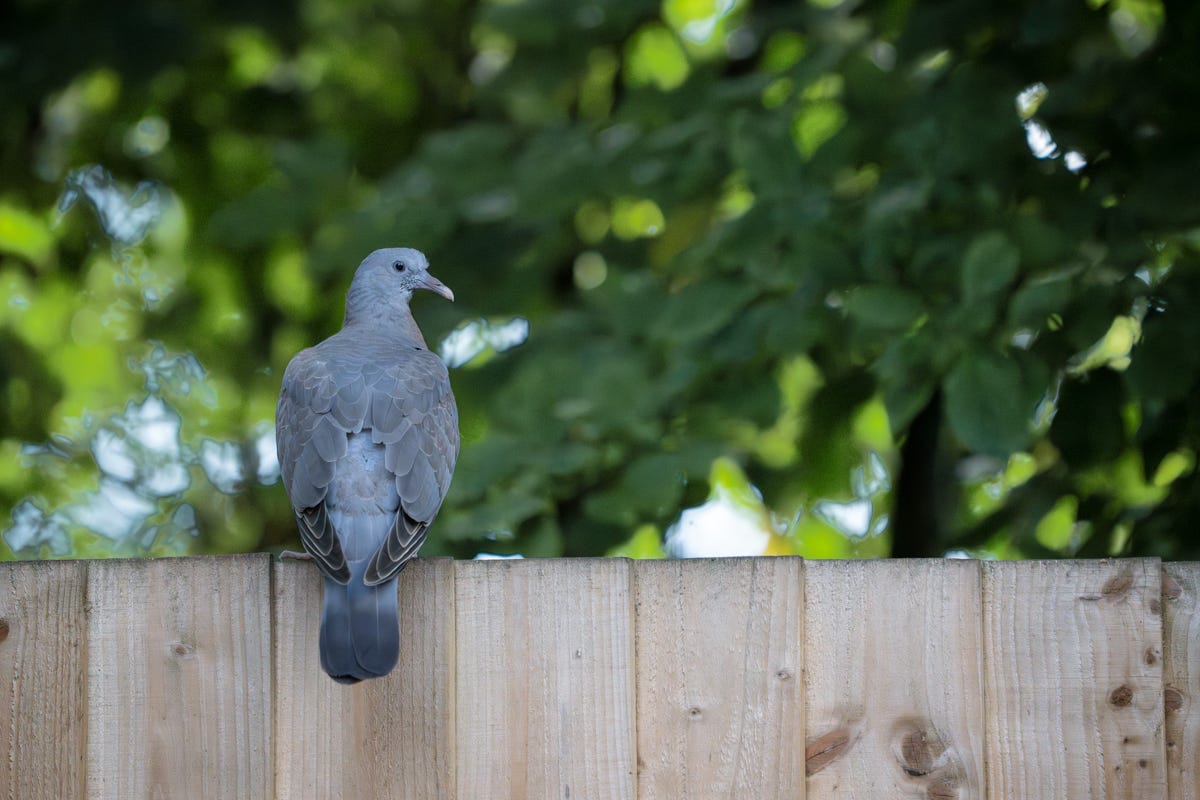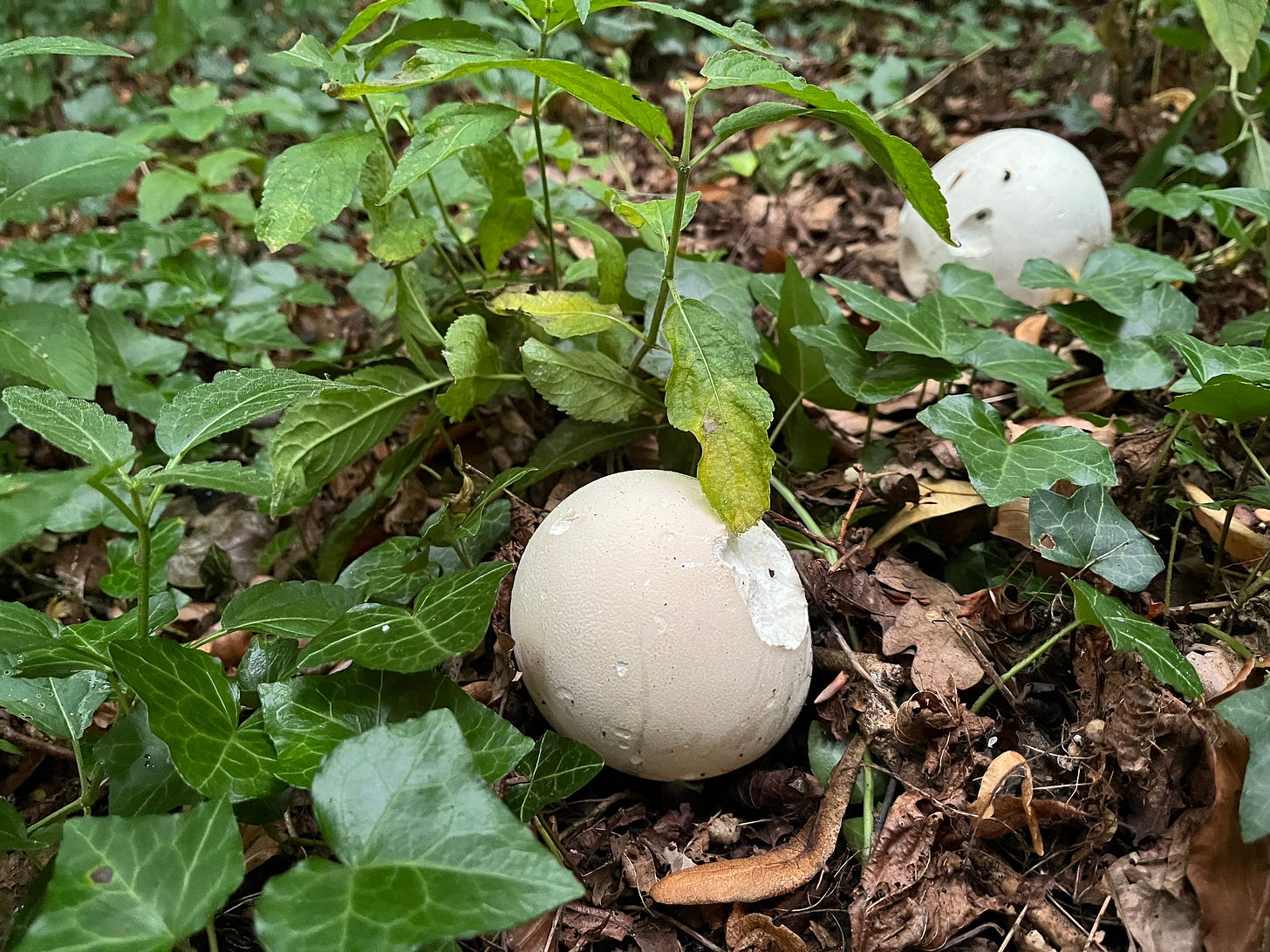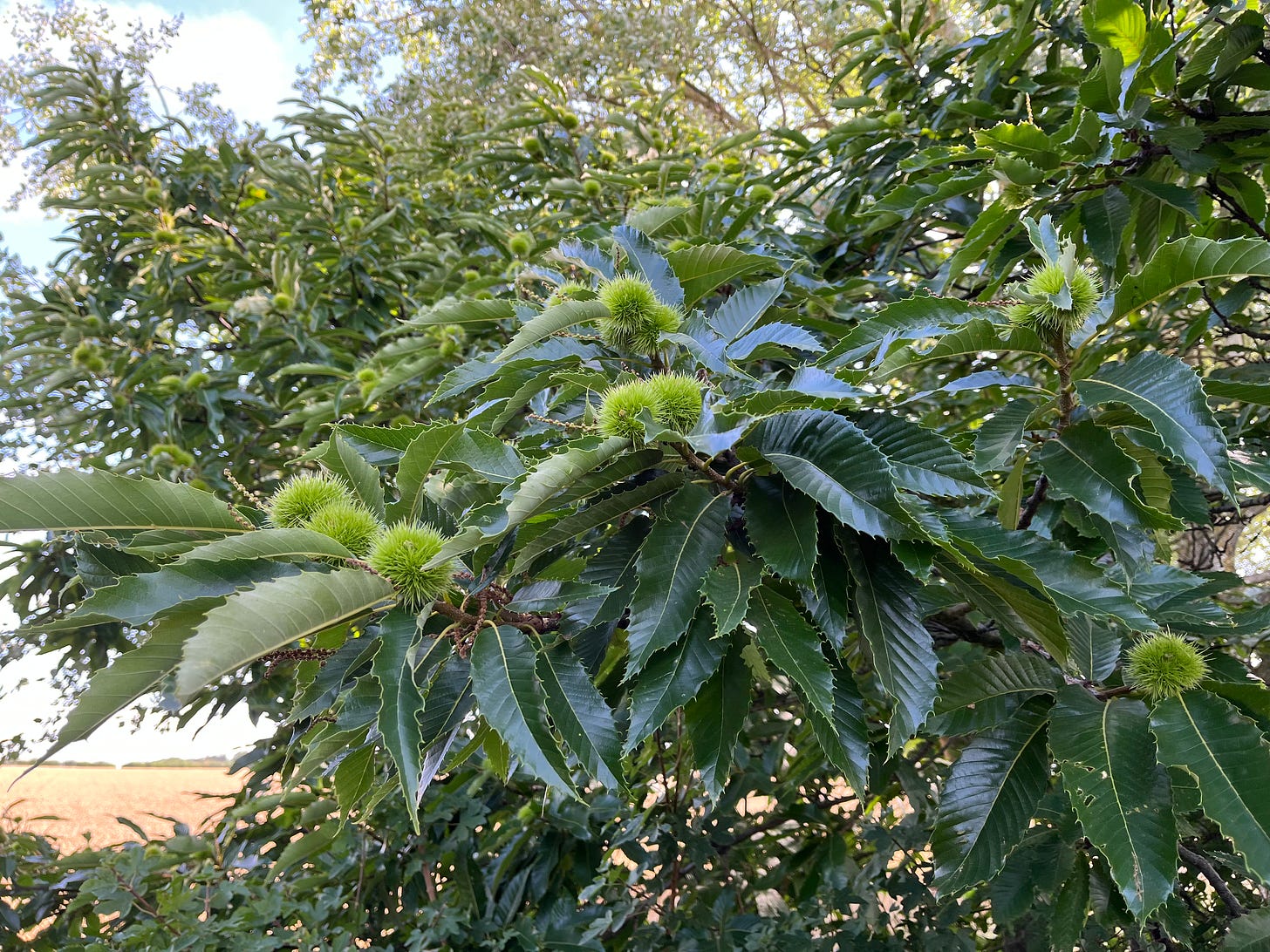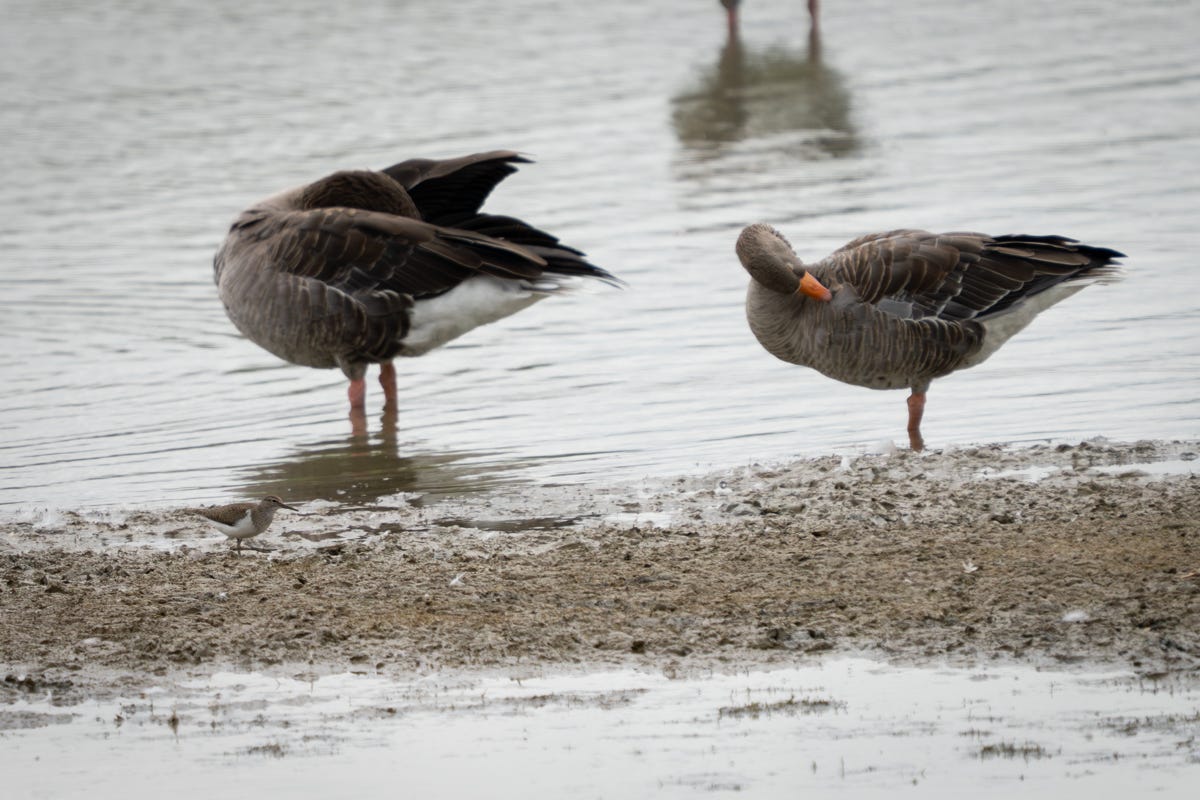Your weekly wander in the wild (Friday 1 August -ish)
This week, we're wandering straight into a new season (and it's a good one!).
This week’s walk begins in the back garden of a house that no longer feels like my home. The bed is gone, my art is gone – just some big bits of furniture and a few ‘odds and ends’ are left.
Thankfully, most of the juvenile birds in my garden are now indistinguishable from the adults and are well able to find food for themselves. The last remaining visibly ‘babyish’ birds are the two Woodpigeon squabs. Woodies nest almost all year round, so out-of-season fledglings is the norm.
This one is starting to grow into his previously oversized, bulbous beak – because his body is now also rather bulbous. He still looks a bit scruffy, and lacks the plumage features of his parents: a white ring around the neck and a blush of irridescent green around that white collar.
He does have the pink flush on his chest, though it isn’t as deeply colourful as on the adults. His eyes appear dark, like an anime character’s, unlike his parents’ yellow eyes with black pupils that feature a weird smudge.
Woodpigeons are hilarious. They make truly terrible nests, often just a few twigs balanced on a branch or some other non-flat surface. When they do, by some miracle, hatch some chicks, it’s kinda up to chance whether or not they look after them.
The first two squabs in my garden seemed to be a source of great annoyance to the parents. The adults spent more time chasing them away than nurturing them. These two, though, have been thoroughly doted on. And they have grown used to my quiet presence on the garden bench, too.
Autumn’s bounty
It feels strange to mention Autumn when the sun is shining and the schools have just closed their doors for the ‘summer holidays’. But it’s August, and the trees and bushes are laden with fruits.
Blackthorn bushes are heavy with their dusty blue fruits. As a child, I’d collect these berries and rub the pale dust off of them to reveal the deeper blue underneath. My sister and I created a complex barter system, with these berries and pastes made from blackberries mixed with chalk as currency. We didn’t know these berries as sloes, so we made up our own name: goochenberries.
Elderberries have also appeared, overnight, on the trees lining the edge of the woodland. Elderberries are in the Sambucas genus, which comes from the Ancient Greek word ‘σαμβύκη’ (sambū́kē) for a wind instrument. Elders and other shrubs in this genus have a soft, marrowy centre to their twigs, which can be removed to create a hollow stick that may be fashioned into a whistle.
With a little more effort, the berries can be turned into wine and cordial. The output created by that additional effort seems to be well worth it, to me.
Fungus season
Where fledglings were stopping me in my tracks and delaying me on my walks, now there is… fungus.
These Giant Puffballs are currently about 10cm across, but they could reach 50cm! Unless, that is, someone harvests them. These are one of the best ‘beginner’ fungi for foragers, according to Wild Food UK, due to “the only lookalike being a football when spotted from afar”.
Not far from these huge, round blobs I discovered some small, black ones. King Alfred’s Cakes!
They grow on fallen trees and can stay put for years. These ones are on a relatively recently fallen tree, so I suppose I better get used to seeing them.
With a name like that, you’re hoping for a story, right? Here’s the Woodland Trust to explain:
King Alfred lived in the 9th century when parts of Britain had been overrun by Vikings. Trying to escape them, he took refuge in the home of a peasant woman who asked him to watch over her cakes, baking by the fire. He let them burn and was scolded by the woman for his negligence. It is said that embarrassed and ashamed, he scattered the cakes to get rid of the evidence.
These lovely little fungi are also called ‘cramp balls’ as carrying them about with you was said to protect you from getting cramps. Despite their delicious name and medicinal properties when carried, they are not edible. Not poisonous – just too hard and nasty to eat!
They do serve other uses however, as they burn well. Firelighters, charcoal and a way to move fire from one location to another are listed as possible uses on Wild Food UK, as well as… handwarmers. Though they don’t say if you have to warm them on the fire first (or how!).
Get them while they’re hot
Finally, something warming AND edible: sweet chestnuts. The nuts are forming inside those spikey balls, soon ready to be broken open and gathered (if the squirrels don’t get there first). Roasted on an open fire is, I hear, the best way to prepare these snacks.
I’m generally hesitant to eat anything found on walks, even sweet fruits, because I don’t really like surprises. I prefer to know what something will taste like before I try it, and wild foods rarely offer that security. But I might be tempted on my next wander, with blackberries everywhere.
I certainly won’t be taste testing the King’s burnt little cakes, however.
I suppose I’d better add some more birds. The Greylag Geese are gathering in huge numbers at my local flooded gravel pit – the noise is quite remarkable. But especially so because this is next to an airfield, so often there is the drone of a biplane doing acrobatics overhead, which sends the geese into a tizzy.
Here’s today’s acrobatic plane with a backdrop of honking.
And among all those geese, a single Common Sandpiper was probing the mud. This is the first photo I have managed to get that shows off the way the white plumage stretches up over its shoulder, setting it apart from all other sandpipers. But it’s quite tiny next to our largest goose species – bottom left of the photo to see what I mean.
That’s all this week, thank you for joining me on a belated stroll around the countryside. I can’t wait to see your fungi photos that I know are going to flood my feed over the coming weeks! And any birds you may have spotted this week too, of course.










Really enjoyed this one! Can’t wait until the elderberries ripen up here so I can make some pontack sauce.
Blackthorn berries must be where sloe gin comes from!
Beautiful post gem. A little of everything.